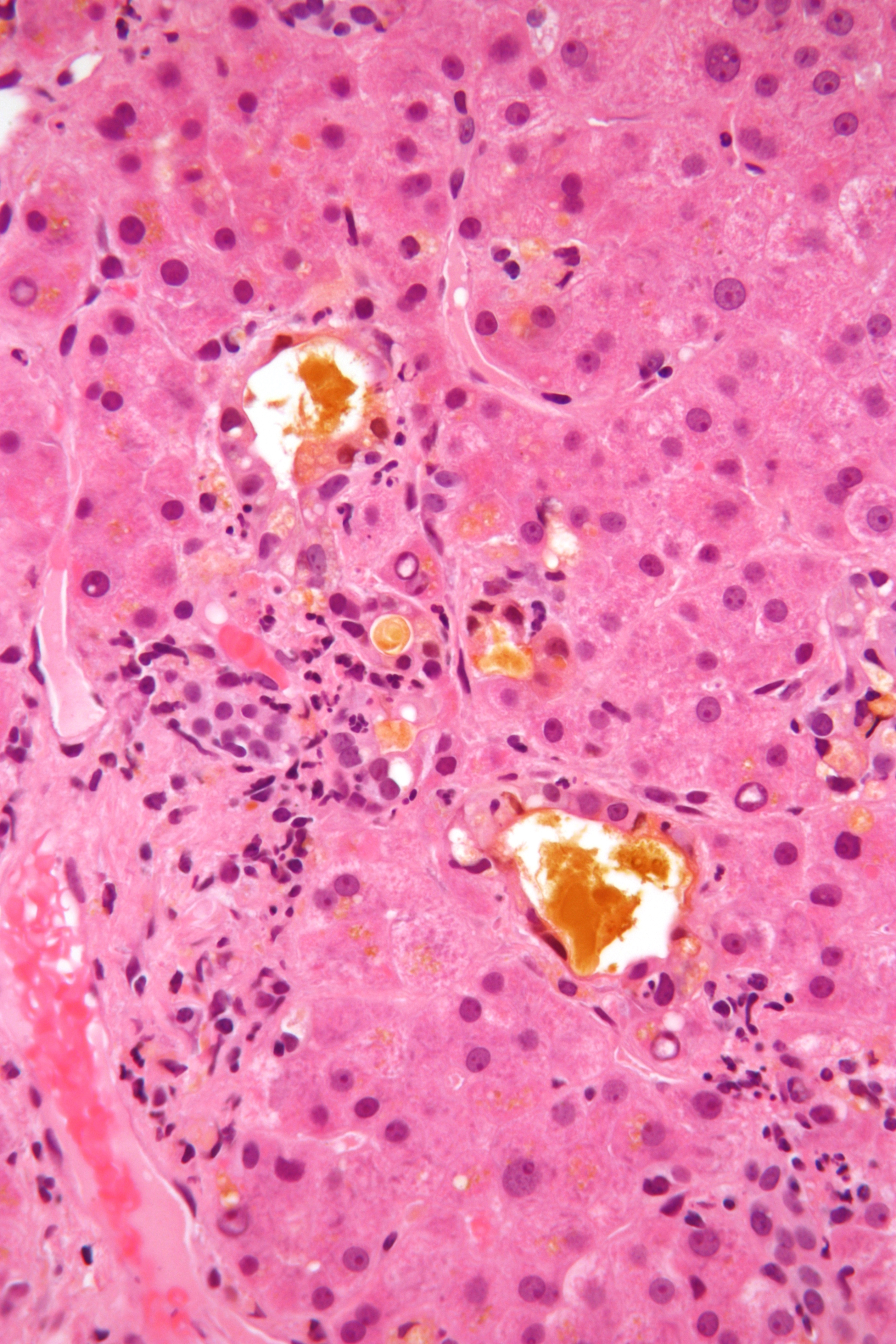|
Bilious Vomiting Syndrome
Bilious vomiting syndrome in dogs is vomiting in response to bile-induced inflammation of the stomach. It is also known as reflux gastritis syndrome and duodenal-gastric reflux. Bile salts interfere with the gastric mucosal barrier, allowing acid to irritate the stomach lining and cause gastritis. Dogs with this condition usually vomit in the morning after not eating all night. Treatment is to feed late at night. H2 blockers and antiemetic An antiemetic is a drug that is effective against vomiting and nausea. Antiemetics are typically used to treat motion sickness and the side effects of opioid analgesics, general anaesthetics, and chemotherapy directed against cancer. They may ...s can also be used. Bilious vomiting syndrome is a diagnosis of exclusion, meaning that the dog is normal otherwise and no other causes of the vomiting have been found. References External linksSigns Of Arthritis In Dogs Syndromes in dogs {{Veterinary-med-stub ... [...More Info...] [...Related Items...] OR: [Wikipedia] [Google] [Baidu] |
Bile
Bile (from Latin ''bilis''), or gall, is a dark-green-to-yellowish-brown fluid produced by the liver of most vertebrates that aids the digestion of lipids in the small intestine. In humans, bile is produced continuously by the liver (liver bile) and stored and concentrated in the gallbladder. After eating, this stored bile is discharged into the duodenum. The composition of hepatic bile is (97–98)% water, 0.7% bile salts, 0.2% bilirubin, 0.51% fats (cholesterol, fatty acids, and lecithin), and 200 meq/L inorganic salts. The two main pigments of bile are bilirubin, which is yellow, and its oxidised form biliverdin, which is green. When mixed, they are responsible for the brown color of feces. About 400 to 800 millilitres of bile is produced per day in adult human beings. Function Bile or gall acts to some extent as a surfactant, helping to emulsify the lipids in food. Bile salt anions are hydrophilic on one side and hydrophobic on the other side; consequently, they tend ... [...More Info...] [...Related Items...] OR: [Wikipedia] [Google] [Baidu] |
Gastric Mucosal Barrier
The gastric mucosal barrier is the property of the stomach that allows it to safely contain the gastric acid required for digestion. If the barrier is broken, as by acetylsalicylic acid (ASA, aspirin) in acid solution, acid diffuses back into the mucosa where it can cause damage to the stomach itself. The barrier consists of three protective components. These provide the additional resistance for the mucosal surface of the stomach. The three components include: * A compact epithelial cell lining. Cells in the epithelium of the stomach are bound by tight junctions that repel harsh fluids that may injure the stomach lining. * A special mucus covering, derived from mucus secreted by surface epithelial cells and Foveolar cells. This insoluble mucus forms a protective gel-like coating over the entire surface of the gastric mucosa. The mucus protects the gastric mucosa from autodigestion by e.g. pepsin and from erosion by acids and other caustic materials that are ingested. * Bicarb ... [...More Info...] [...Related Items...] OR: [Wikipedia] [Google] [Baidu] |
Gastritis
Gastritis is inflammation of the lining of the stomach. It may occur as a short episode or may be of a long duration. There may be no symptoms but, when symptoms are present, the most common is upper abdominal pain (see dyspepsia). Other possible symptoms include nausea and vomiting, bloating, loss of appetite and heartburn. Complications may include stomach bleeding, stomach ulcers, and stomach tumors. When due to autoimmune problems, low red blood cells due to not enough vitamin B12 may occur, a condition known as pernicious anemia. Common causes include infection with '' Helicobacter pylori'' and use of nonsteroidal anti-inflammatory drugs ( NSAIDs). Less common causes include alcohol, smoking, cocaine, severe illness, autoimmune problems, radiation therapy and Crohn's disease. Endoscopy, a type of X-ray known as an upper gastrointestinal series, blood tests, and stool tests may help with diagnosis. The symptoms of gastritis may be a presentation of a myocardial infarcti ... [...More Info...] [...Related Items...] OR: [Wikipedia] [Google] [Baidu] |
H₂-receptor Antagonist
H2 antagonists, sometimes referred to as H2RAs and also called H2 blockers, are a class of medications that block the action of histamine at the histamine H2 receptors of the parietal cells in the stomach. This decreases the production of stomach acid. H2 antagonists can be used in the treatment of dyspepsia, peptic ulcers and gastroesophageal reflux disease. They have been surpassed by proton pump inhibitors (PPIs); the PPI omeprazole was found to be more effective at both healing and alleviating symptoms of ulcers and reflux oesophagitis than the H2 blockers ranitidine and cimetidine. H2 antagonists are a type of antihistamine, although in common use the term "antihistamine" is often reserved for H1 antagonists, which relieve allergic reactions. Like the H1 antagonists, some H2 antagonists function as inverse agonists rather than receptor antagonists, due to the constitutive activity of these receptors. The prototypical H2 antagonist, called cimetidine, was developed by Si ... [...More Info...] [...Related Items...] OR: [Wikipedia] [Google] [Baidu] |
Antiemetic
An antiemetic is a drug that is effective against vomiting and nausea. Antiemetics are typically used to treat motion sickness and the side effects of opioid analgesics, general anaesthetics, and chemotherapy directed against cancer. They may be used for severe cases of gastroenteritis, especially if the patient is dehydrated. Some antiemetics previously thought to cause birth defects appear safe for use by pregnant women in the treatment of morning sickness and the more serious hyperemesis gravidarum. __TOC__ Types * 5-HT3 receptor antagonists block serotonin receptors in the central nervous system and gastrointestinal tract. As such, they can be used to treat post-operative and cytotoxic drug nausea & vomiting. However, they can also cause constipation or diarrhea, dry mouth, and fatigue. ** Dolasetron (Anzemet) can be administered in tablet form or in an injection. ** Granisetron (Kytril, Sancuso) can be administered in tablet (Kytril), oral solution (Kytril), inj ... [...More Info...] [...Related Items...] OR: [Wikipedia] [Google] [Baidu] |

